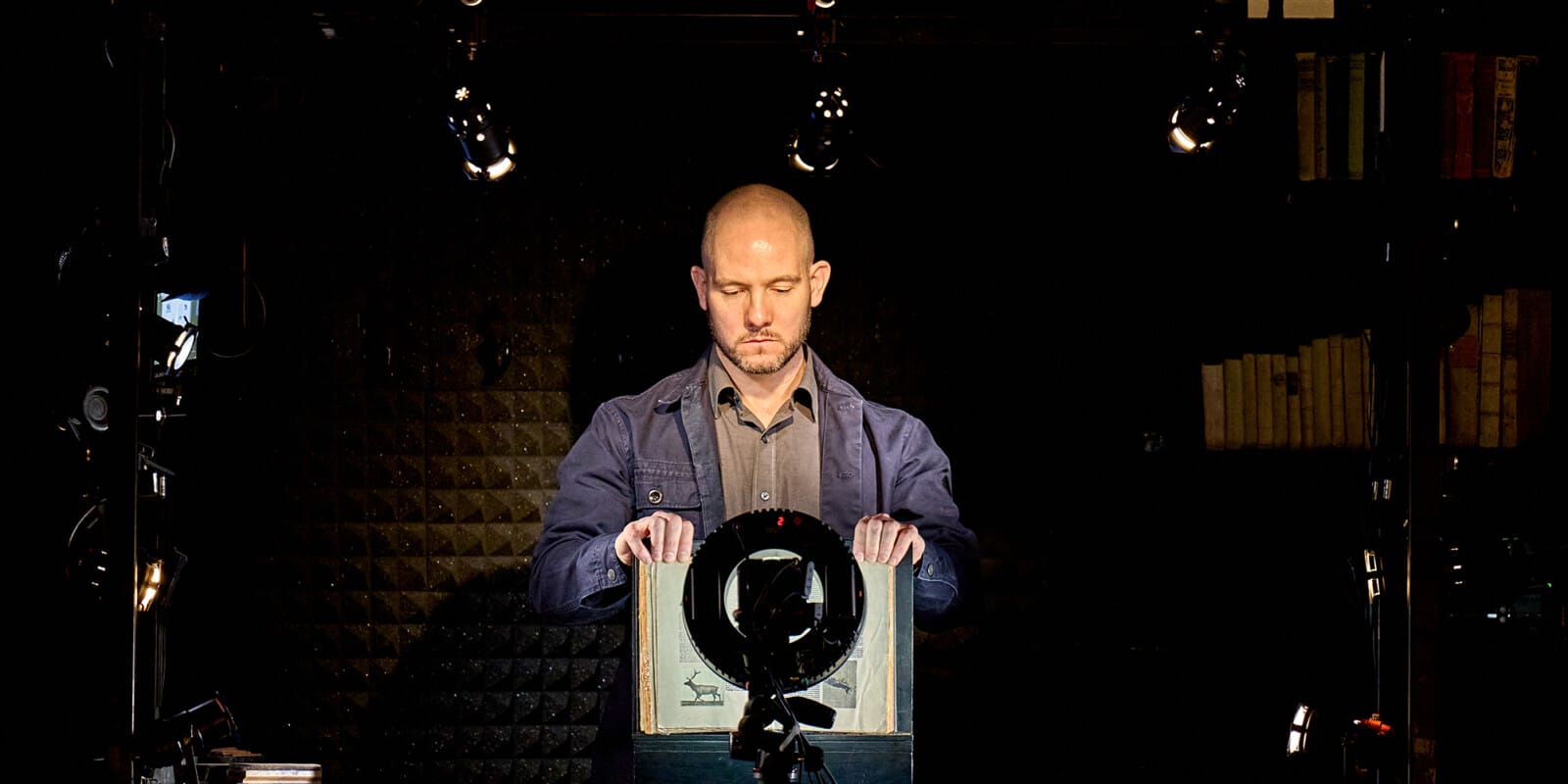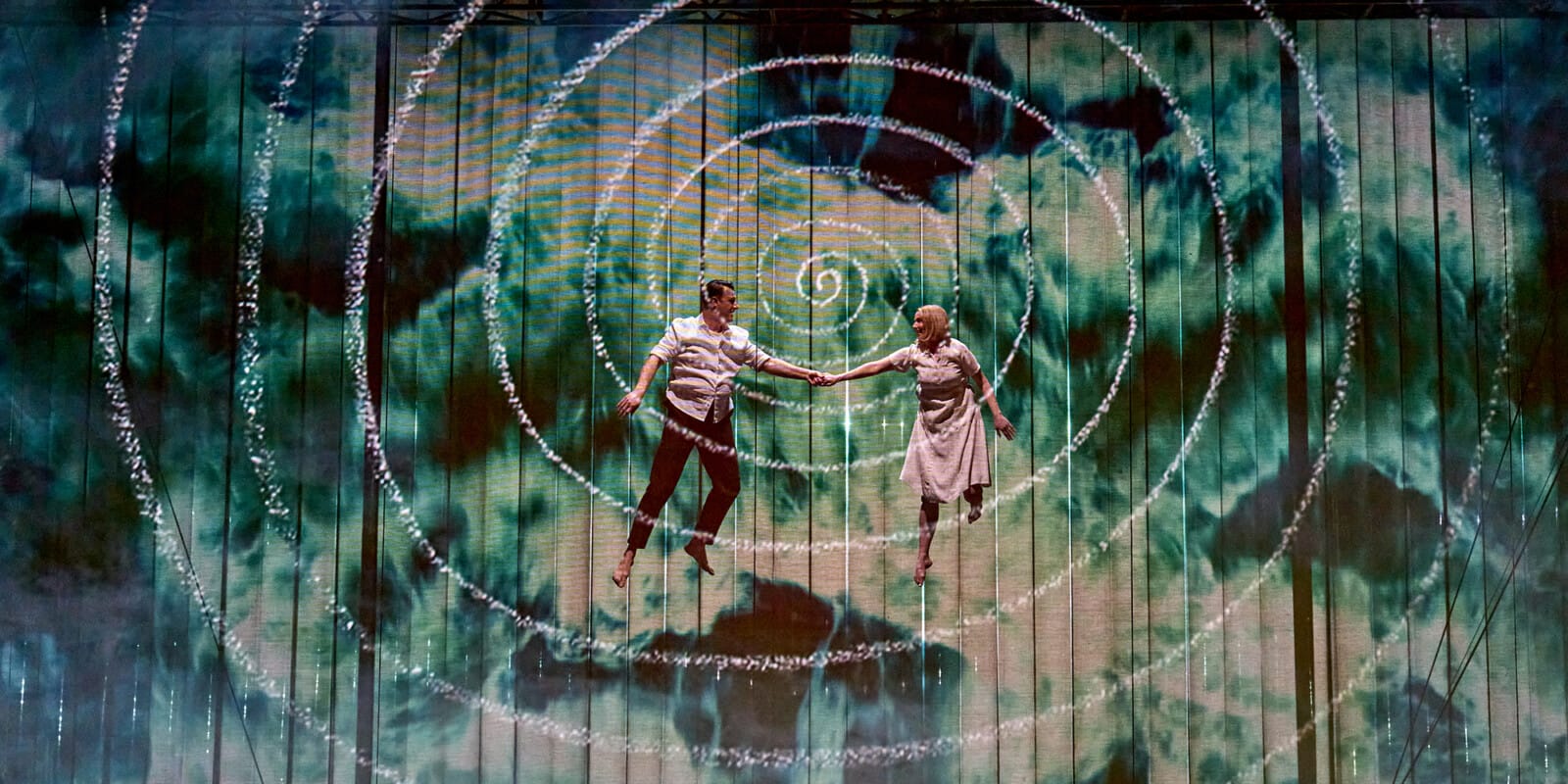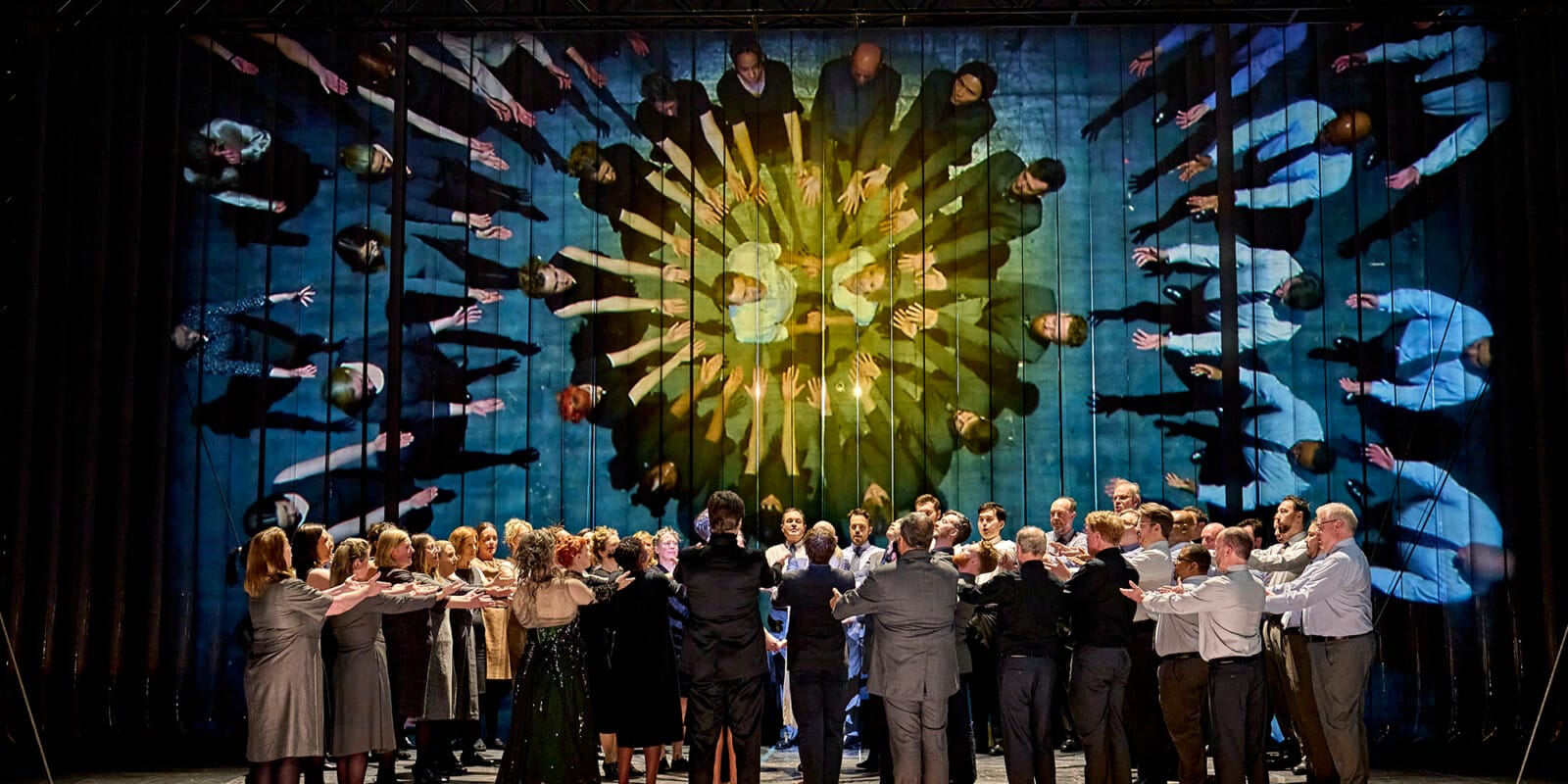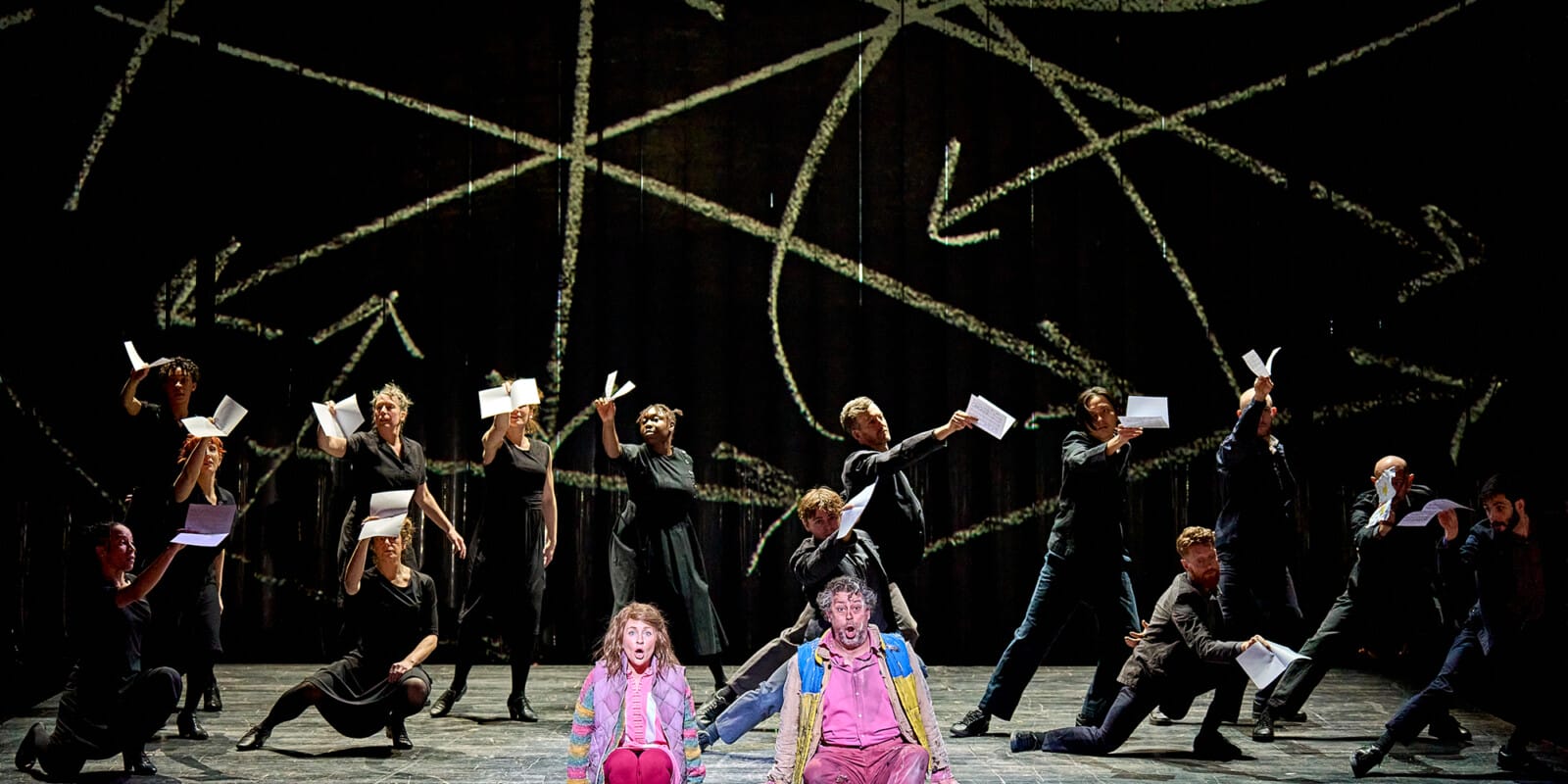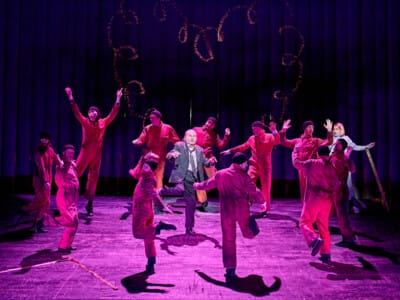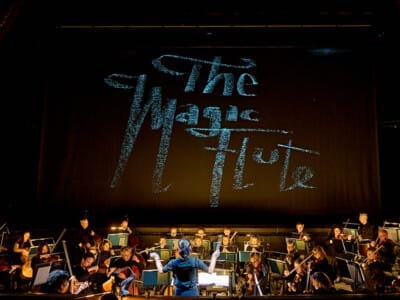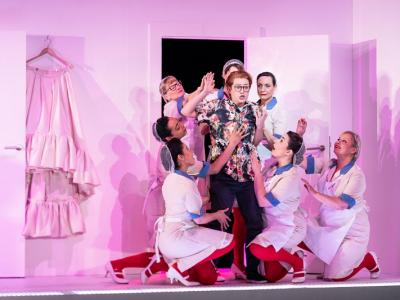Four things you didn't know about McBurney's The Magic Flute
First seen at the London Coliseum in 2013, Simon McBurney’s five-star production of Mozart’s The Magic Flute is a seminal ENO production.
Here’s four things you didn’t already know about the production.
The orchestra pit is raised
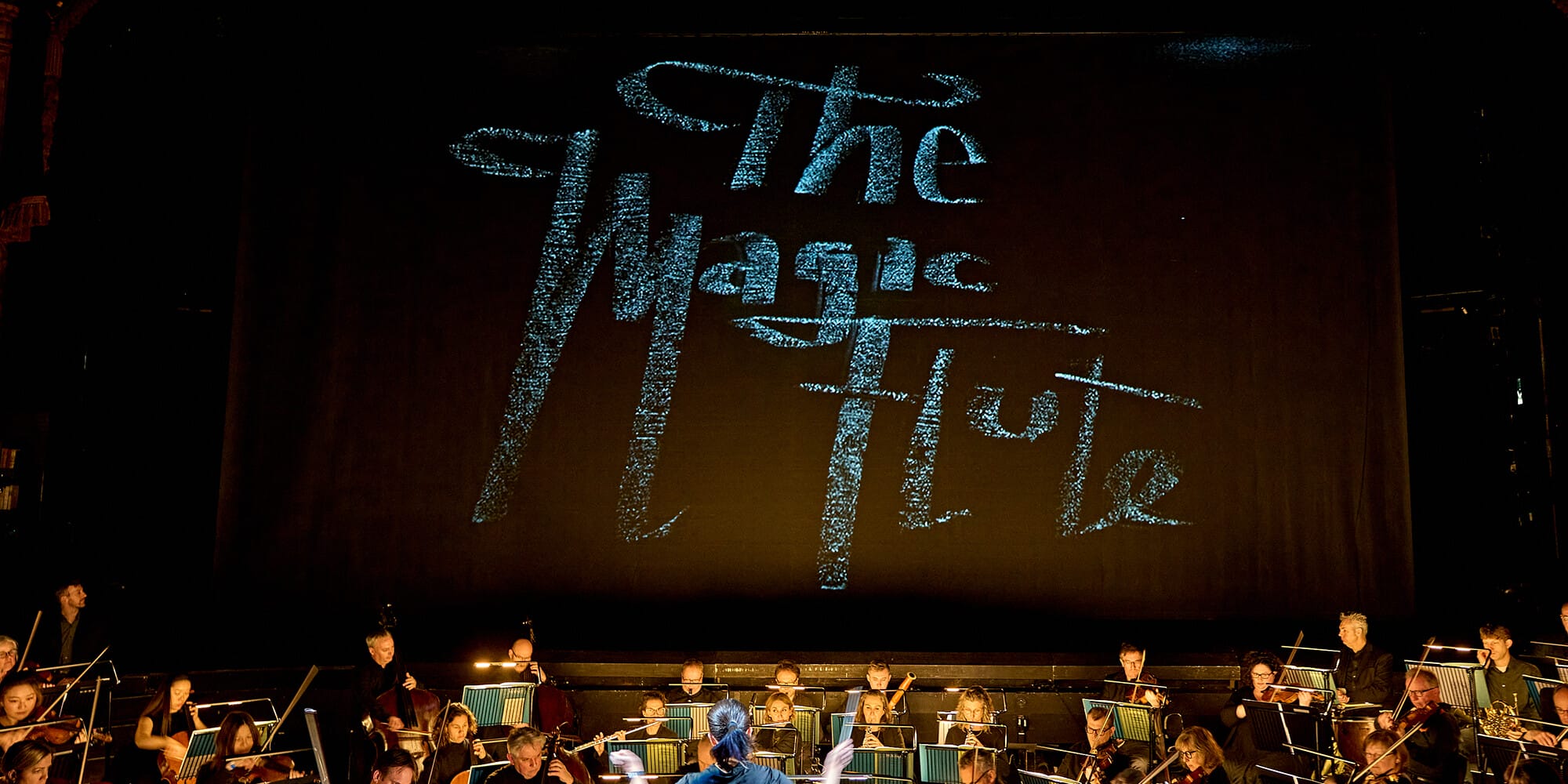
Since Wagner’s Bayreuth Festspielhouse opened in Germany, 1876, orchestras have predominantly played from a pit. This space below the main stage was intended to keep the musicians out of sight from audiences who felt distracted by their presence.
In the majority of productions at the London Coliseum, the orchestra play from the pit, although they can be seen if you’re sat from the Dress Circle up! In this production of The Magic Flute, however, the orchestra are seated at stage level.
If having the orchestra at stage level wasn’t exciting enough, McBurney brings Tamino and Papageno’s magical musical instruments to life with help from two of our musicians. Keep your eyes peeled for the magical flute and keyboard glockenspiel solos.
This production uses a foley artist
Video
Named after the sound effects artist Jack Foley, a foley artist creates live sounds to match movement happening on the stage.
The foley artist makes realistic sounds from a huge number of props to replicate sounds that would not otherwise heard as well at the back of the auditorium. This production’s foley artist, Ruth Sullivan, uses everyday objects such as stones, a watering can, a slinky and a wooden spoon to create sounds.
Watch out for the scene where Papageno is tuning bottles to play a scale on them. As Papageno ‘plays’ his musical wine bottles (with leeks, we might add) the sounds are actually coming from the foley artist, hitting real glass bottles in perfect time with the action on stage.
Through use of video, McBurney found a way to bring scenes and themes to life in the simplest way.
Throughout the production, hand-sketched chalkboard drawings are projected onto the stage. These simple drawings, sketched in time with the music, depict a monstrous snake, rocky landscapes and swirling pools of water, to name a few.
The video artist, Ben Thompson, also uses props such as books and stick figures to drive the action on the stage.
The cast can fly
Video
In the opera, a number of the characters have to go through a series of trials on the quest for enlightenment.
In this production, instead of plunging Tamino and Pamina in a pool of water, the couple ‘swim’ through their water trial by flying!
Don’t miss the foley artist making live water noises to create an even more immersive experience for all.

